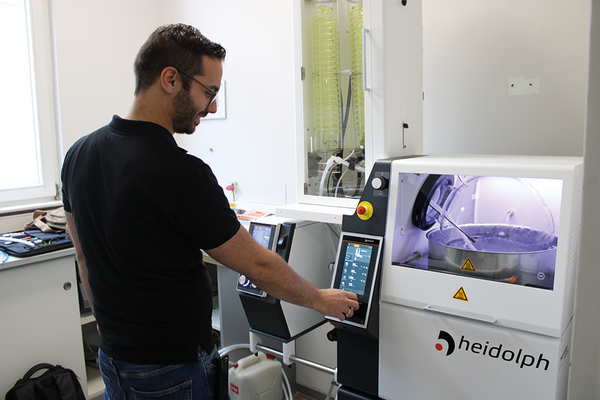Saving resources and setting an example – How we recover solvents in the OELCHECK laboratory
When examining many lubricants and operating fluids, solvents are required as additives. After use, they are mixed with lubricating oils or greases. To date, a large amount of our solvent waste has been sent for thermal recovery by waste management companies. However, as we want to avoid waste as far as possible and save resources, OELCHECK has been recovering the solvent heptane using its own distillery since 2008. Now, we're recovering kerosene, too. This allows us to save resources, reduce our dependence on the supply of kerosene and improve our carbon footprint.

Heptane and kerosene in the laboratory
Heptane is a clear, colourless liquid and is an aliphatic compound. In the OELCHECK laboratory, it is primarily used as a solvent for cleaning viscometers and infrared spectrometers.
Kerosene is a fraction of the light middle distillate extracted from the petroleum refinery, alongside other fuels. At 150 °C to 280 °C, kerosene has a higher boiling point than conventional gasoline. Kerosene is used to dilute samples when examining the elements contained therein using ICP spectrometers and to rinse equipment for optical particle analysis.
Distillation and recovery
The OELCHECK laboratory requires around 10,000 litres of kerosene and 10,000 litres of heptane a year.
After use, the quantities mixed with lubricant residues are distilled on site. We already use a Heidolph large-scale rotary evaporator for heptane, and a second one is now being installed for kerosene. The evaporators stand out for their high level of safety and ease of use.
The distillation process is fully automated with repetitive cycles, which means the devices are extremely powerful. By way of comparison, a system not fully automated would have to be five times larger.
During the treatment process, the separated kerosene or heptane waste is distilled and separated back into oil and kerosene or heptane. The oil residues are collected as waste oil and disposed of by a designated company. The solvents recovered are reused straight away in the OELCHECK laboratory.
The distillation of used solvents on site means we require significantly lower quantities of fresh products, save resources and reduce our carbon emissions by at least 20 tonnes a year.
OELCHECKER Spring 2024, page 7



